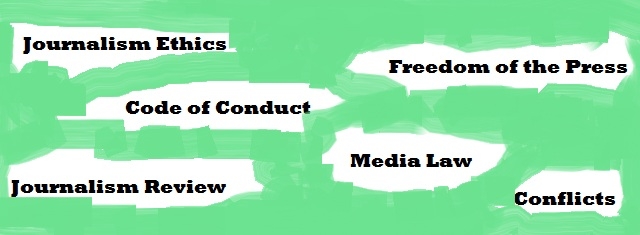Politics
U.S.A. & TERRORISM - QUESTIONS FROM THE PRESS CORPS
WITH SENIOR ADMINISTRATION OFFICIALS

JOURNALISTS (Source: Ruby BIRD & Yasmina BEDDOU)
USPA NEWS -
Three United States Senior Administration Officials, during aTeleconference (December 17, 2015) were responding to questions coming from the Press. The issue was regarding the briefing they just gave on the Current K-1 Visa Screening Process and Review....
Three United States Senior Administration Officials, during a Teleconference (December 17, 2015) were responding to questions coming from the Press. The issue was regarding the briefing they just gave on the Current K-1 Visa Screening Process and Review.
For more about the Briefing, to see article on same topic : U.S.A. & TERRORISM - BRIEFING ON THE CURRENT K-1 VISA SCREENING PROCESS & REVIEW - by Ruby BIRD
QUESTION: Hi, it´s Margaret Brennan (CBS News). Thanks for this. Can you explain the system ““ so far it sounds like this is based on information that the applicant provides. Can you explain to what degree there is any screening of information that is in the public space, such as through social media, through messaging online? At what point in the process does that happen? To what degree does it happen ? And I know there are pilot programs out there, but can you actually try to quantify just how big of a web there is here to sort of sort through ?
SENIOR ADMINISTRATION OFFICIAL ONE: This is Senior Administration Official One from [department withheld]. I mean, that´s actually ““ I think the process that I laid out is essentially four steps. I mean, obviously, the first step was the petition with USCIS; next step with the ““ State runs the system within consular; and then CBP for entrance into the United States; and then lastly, the adjustment of status for USCIS at the very end of the process.
Each steps in the ““ each of the steps in the process are not solely dependent on information that is provided by the applicant or the visa ““ either the visa applicant or the petitioner inside the United States. At each step there is other information that is considered ““ some open-source information, certainly ““ that is considered along the way at each step.
So ““ and with regard to the specific question of social media and open-source information, under certain circumstances, absolutely that information is considered at each step whether by CBP or by ICE, and ““ or by USCIS in appropriate circumstances.
So ““ and with regard to the specific question of social media and open-source information, under certain circumstances, absolutely that information is considered at each step whether by CBP or by ICE, and ““ or by USCIS in appropriate circumstances.
That said, the President has directed as part of the review of the K-1 visa process a review into the use of open-source information as well ““ including social media ““ to determine whether we should make any additional sort of ““ an additional look at this question and evaluate our current policies for the use of social media and open-source in the screening and vetting process.
MODERATOR: Great, ready for our next question please.
MODERATOR: Great, ready for our next question please.
OPERATOR: We do have a follow-up question from Margaret Brennan. Please go ahead.
QUESTION: So what are the certain circumstances ? We know the review is happening, but what are the certain circumstances where social media is looked at ? What does that mean ? Is there a trigger for that ?
SENIOR ADMINISTRATION OFFICIAL ONE: I mean, I don´t want to go into detail with regard to any particular cases and all that, but where there is an indication that there is ““ if there is an indication that requires the use of the ““ looking at social media or other circumstances, consistent with policies and privacy protections, there is ““ certainly, the operational agencies have the ability to do that.
QUESTION: So what are the certain circumstances ? We know the review is happening, but what are the certain circumstances where social media is looked at ? What does that mean ? Is there a trigger for that ?
SENIOR ADMINISTRATION OFFICIAL ONE: I mean, I don´t want to go into detail with regard to any particular cases and all that, but where there is an indication that there is ““ if there is an indication that requires the use of the ““ looking at social media or other circumstances, consistent with policies and privacy protections, there is ““ certainly, the operational agencies have the ability to do that.
MODERATOR: Our next question comes from the line of Brad Klapper with AP. Please go ahead. And Brad, your line is open.
QUESTION: Thank you. I wanted to ask how you match data and fingerprints from individuals from countries such as Syria, where you have essentially no criminal cooperation with the government there. There are no American law enforcement or personnel on the ground. You have no way of really knowing what people´s criminal histories were, what people´s terrorist histories were there. So how do you ““ what´s the value of fingerprints and all of these checks if you don´t even have these names in the system or any information about them ?
QUESTION: Thank you. I wanted to ask how you match data and fingerprints from individuals from countries such as Syria, where you have essentially no criminal cooperation with the government there. There are no American law enforcement or personnel on the ground. You have no way of really knowing what people´s criminal histories were, what people´s terrorist histories were there. So how do you ““ what´s the value of fingerprints and all of these checks if you don´t even have these names in the system or any information about them ?
SENIOR ADMINISTRATION OFFICIAL TWO : Yeah. This is Senior Administration Official Number Two, I guess. As I said in the explanation, we do run fingerprints on all of our visa applicants ““ on nearly all visa applicants, but to include all immigrants and all K-1 visa applicants. And we compare them against the holdings that the U.S. Government has. And I think the questioner is right that there are parts in the world where we have less penetration than others. We recognize that, but that ““ we can only compare the prints against the records that we already hold.
SENIOR ADMINISTRATION OFFICIAL ONE : This is also ““ just to piggyback on this. This is Senior Administration Official Number One. The other thing also with regard to prints is, of course, we also have strong, close partnerships with our ““ with foreign partners, some of whom have fingerprint information as well, and through agreements that we have with foreign partners, both the HSPD-6 agreements as well as the Preventing and Combating Serious Crimes agreements with our foreign partners. We exchange information ““ not only biographic information, but also biometric information, to the extent that our partners have it.
So we do also have access to print information from our foreign partners as well as other agencies of the United States Government.
The other thing also I would say on the fingerprint context within the IDENT system ““ the DHS IDENT system is that not only does ““ obviously, as my colleague from [department withheld] noted, that the State Department collects fingerprints on people, visa applicants, but also all aliens entering the United States are also ““ we collect fingerprints from them, all aliens entering the United States.
The other thing also I would say on the fingerprint context within the IDENT system ““ the DHS IDENT system is that not only does ““ obviously, as my colleague from [department withheld] noted, that the State Department collects fingerprints on people, visa applicants, but also all aliens entering the United States are also ““ we collect fingerprints from them, all aliens entering the United States.
CPB does that at the ports of entry under the US-VISIT system. And that allows our officers, essentially, to confirm that the person presenting him or herself at the port of entry is also the same person ““ is at least connected to the visa that is issued that is also encoded with the fingerprint as well. So there is a one-to-one match at that point as well.
OPERATOR: And the last question comes from the line of Howard LaFranchi with Christian Science Monitor. Please go ahead.
OPERATOR: And the last question comes from the line of Howard LaFranchi with Christian Science Monitor. Please go ahead.
QUESTION : Okay, yeah. Thanks for doing this. Just a quick question: I´m wondering about the timeline of this review and when you´ll be coming out with ““ and will there be any public airing of recommendations, or how are we going to know what the result of this review was ?
SENIOR ADMINISTRATION OFFICIAL ONE : This is Senior Administration Official One. I mean, certainly, the working groups are already convened and they are on ““ they are reviewing these ““ all these materials as we speak.
SENIOR ADMINISTRATION OFFICIAL ONE : This is Senior Administration Official One. I mean, certainly, the working groups are already convened and they are on ““ they are reviewing these ““ all these materials as we speak.
So ““ and certainly, the President, in the interest of the security of the United States, certainly has asked us to redouble our efforts, certainly including through the holiday period, to go through all five of the key areas ““ whether it be retrospective background checks and looking at the process improvements there, looking at issues with regard to adjudication process improvements there, interviews, the use of social media and open source information, as well as improvements conceivably in the information collection area.
It´s a rigorous review, it is a searching review, and there´s a lot of areas that we are covering to look at the soup-to-nuts of this whole process, each of the steps. And we are working with dispatch.
MODERATOR: Thanks so much to all three of our senior Administration officials as well as to all of you journalists who joined us this morning.
Source : United States Department of State
Ruby BIRD
http://www.portfolio.uspa24.com/
MODERATOR: Thanks so much to all three of our senior Administration officials as well as to all of you journalists who joined us this morning.
Source : United States Department of State
Ruby BIRD
http://www.portfolio.uspa24.com/
Ruby Bird Washington Dc Press Teleconference Briefing Current K-1 Visa Screening Process And Review Terrorism Senior Administration Officials Fbi Investigation Counterterrorism Center Process Review Department Of Homeland Security State Department
Liability for this article lies with the author, who also holds the copyright. Editorial content from USPA may be quoted on other websites as long as the quote comprises no more than 5% of the entire text, is marked as such and the source is named (via hyperlink).






